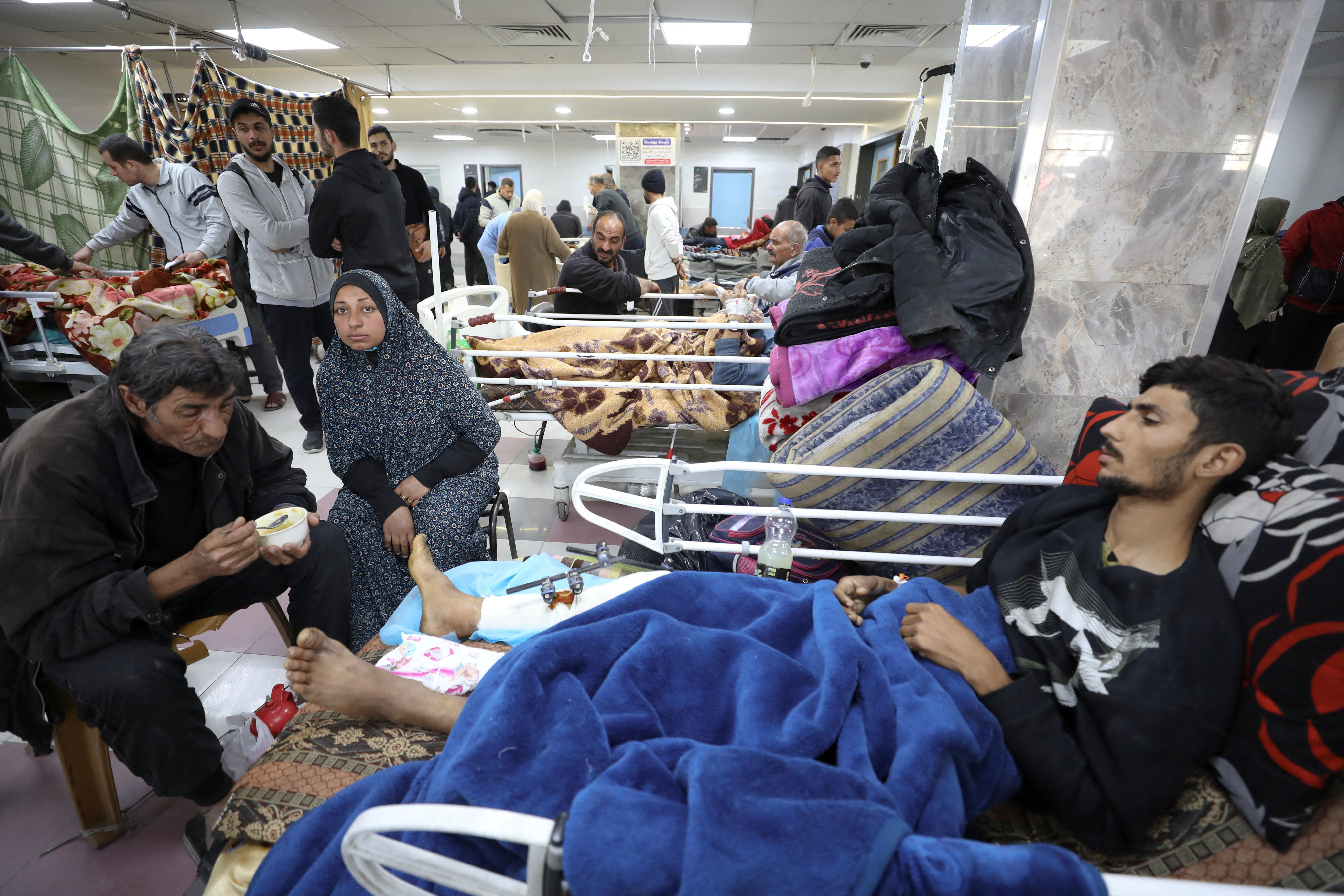Israeli military review of Gaza aid convoy deaths finds most killed in stampede

JERUSALEM (Reuters) -Israel’s military said on Sunday most of the Palestinians killed last week as crowds massed near an aid convoy in Gaza died in a stampede but local health officials said casualties brought into hospitals had been hit by large-calibre ammunition.
Pressure has mounted on Israel over the deaths of dozens of Palestinians during a confused incident in the Gaza Strip on Thursday in which crowds surrounded a convoy of aid trucks and soldiers opened fire, with several countries backing a U.N. call for an inquiry.
Palestinian health officials say more than 100 people were killed in the incident in the early hours of the morning, most of them shot by Israeli troops. Israeli officials have dismissed the figures given by the Palestinians but have not offered any estimates of their own.
On Sunday, Israel’s main military spokesman Rear Admiral Daniel Hagari announced the result of a preliminary review which repeated earlier Israeli statements that most of those killed had been trampled underfoot as crowds rushed the aid trucks.
In addition “several individuals” were targeted as troops fired on people who approached them in the aftermath in a manner that suggested an immediate threat, he said, adding that an independent inquiry had been opened but giving no details.
Muatasem Salah, a member of the Emergency Committee at the Ministry of Health in Gaza, said there were more than 1,000 casualties, dead and wounded, from the incident and he dismissed the findings of the Israeli review.
“Any attempt to claim that people were martyred due to overcrowding or being run over is incorrect. The wounded and martyrs are the result of being shot with heavy-calibre bullets,” he told Reuters.
Giorgios Petropoulos, head of the Gaza sub-office of the UN Co-ordinator for Humanitarian Affairs (OCHA), who visited Gaza’s Shifa hospital on Thursday and Sunday, said he had seen “a huge, overrun emergency department” at the hospital where many of the wounded were treated.
“There were a lot of heavy injuries, there were many, many surgeries,” he told Reuters. “One surgeon told me he had to do 18 surgeries just the first night.”
He said he had seen five or six people with bullet wounds including a young man shot in the right side of the chest who had taken himself to hospital as there were no ambulances. In addition, a smaller number of people had injuries consistent with falling over or being trampled in the dark.
Many of Israel’s closest allies, including the United States, have called for an inquiry into the incident, which underscored the dire humanitarian crisis in Gaza and the increasingly chaotic conditions in which the small amount of aid reaching the enclave is being distributed.
International aid organizations have warned that hundreds of thousands of people in Gaza are facing the threat of famine, some five months after Israeli troops launched their invasion following the Hamas-led attack on Israel on Oct. 7.
The attack, which killed some 1,200 Israelis and foreigners, was the deadliest single-day incident in Israel’s 75 year history and Israel has responded with a relentless assault that has so far killed more than 30,000 Palestinians, according to Palestinian figures.
As the diplomatic fallout spread, the military said it had launched a more thorough examination of the incident to be handled by “an independent, professional and expert body” which will share its findings as early as in the coming days.
Hagari’s remarks suggested that some of the dead had been killed by Israeli fire after soldiers fired initial warning shots but he gave no details or figures.
“Following the warning shots fired to disperse the stampede and after our forces had started retreating, several looters approached our forces and posed an immediate threat to them. According to the initial review, the soldiers responded toward several individuals,” he said.
(Reporting by Ari Rabinovitch, additional reporting by James Mackenzie and Ali Sawafta in Ramallah; editing by Elaine Hardcastle and Giles Elgood)








